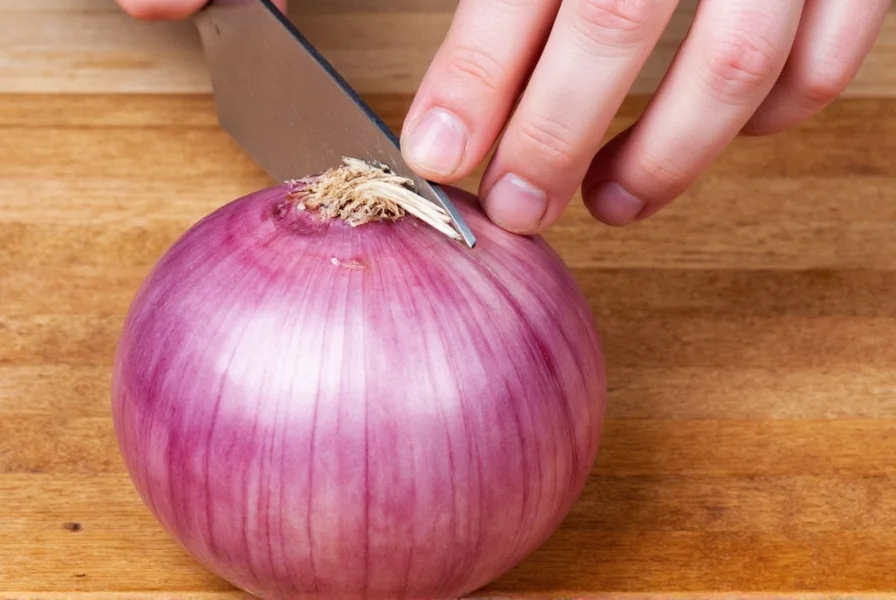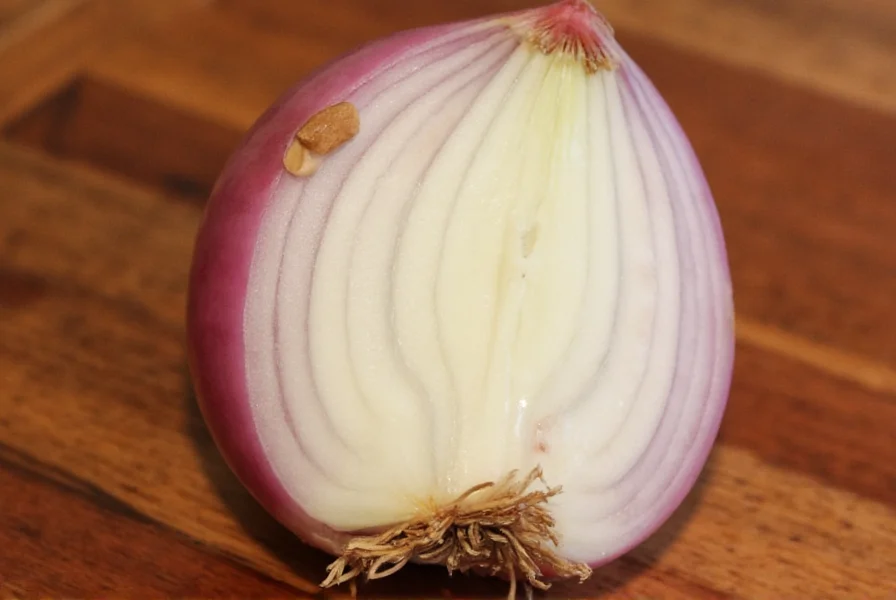Yellow onions are the best all-around choice for chili, offering balanced sweetness and pungency that caramelizes beautifully during long cooking times. However, the ideal onion depends on your recipe type—whether you're making classic Texas-style, Mexican-inspired, or vegetarian chili. This guide breaks down the top 5 onions for chili, their flavor profiles, and how to choose the right one for your needs.
Table of Contents
- Onion 101: What Makes Them Unique
- The Top 5 Onions for Chili
- Flavor Profile Comparison
- Chopping Tips for Maximum Flavor
- Buying Guide: Choosing the Right Onion
- Frequently Asked Questions About Onions in Chili
- Conclusion
Onion 101: What Makes Them Unique
Onions vary in sweetness, pungency, and texture, which directly impact chili flavor. Key differences include:
- Sweetness: Affects how mild or robust the base flavor becomes.
- Pungency: Determines the sharpness and heat level in your dish.
- Texture: Influences how well onions cook down and integrate with other ingredients.
Choosing the right onion creates the flavor foundation for your chili—here's how each type performs.
The Top 5 Onions for Chili
Professional chefs consistently recommend these onions for chili based on cooking performance and flavor synergy:
- Yellow Onion – The classic workhorse for most chili recipes
- Red Onion – Adds vibrant color and bright notes for fresh toppings
- White Onion – Ideal for Mexican-style chili with clean, sharp flavor
- Sweet Onion (Vidalia, Walla Walla) – Perfect for mellow, family-friendly versions
- Shallot – Delivers complex depth for gourmet chili creations
| Type | Sweetness | Pungency | Texture | Best For |
|---|---|---|---|---|
| Yellow Onion | Moderate | High | Firm | Caramelizing, stewing, long-cook chilis |
| Red Onion | Mild | Moderate | Crisp | Salsas, raw garnishes, quick-cook chilis |
| White Onion | Low | Sharp | Crispy | Mexican dishes, tacos, fresh chili blends |
| Sweet Onion | High | Low | Tender | Mellow bases, slow-cooked chilis, family-friendly versions |
| Shallot | Medium | Mildly sharp | Fragile | Complex flavor layers, gourmet chilis |

Chopping Tips for Maximum Flavor
Proper chopping technique maximizes onion flavor release and integration:
- Uniform cuts – Ensure consistent size for even cooking and texture
- Salt pre-treatment – Sprinkle salt on sliced onions before sautéing to draw out moisture and accelerate softening
- Optimal oil use – Use avocado or olive oil to prevent sticking and enhance flavor absorption
- Low-and-slow cooking – Especially for yellow onions, gentle heat develops rich caramelized flavors
- Layered aromatics – Add garlic after onions soften to preserve delicate flavors and prevent burning

Buying Guide: Choosing the Right Onion
Follow these market selection tips for optimal chili results:
1. Yellow Onion
- Features: Thick skin, firm flesh, strong aroma
- Advantages: Affordable, versatile, long shelf life
- Use Cases: Slow-cooked chilis, soups, stews
- Target Audience: Home cooks, batch-makers, budget-conscious chefs
- Occasions: Everyday meals, meal prepping, cold-weather comfort food
2. Red Onion
- Features: Purple skin, crisp texture, mild bite
- Advantages: Adds visual appeal, good for quick use
- Use Cases: Toppings, quick chilis, relishes
- Target Audience: Casual cooks, grillers, summer recipe lovers
- Occasions: BBQs, picnics, tailgates
3. White Onion
- Features: Light skin, clean taste, slight spiciness
- Advantages: Brightens up Mexican-inspired chilis
- Use Cases: Salsas, taco fillings, Tex-Mex chilis
- Target Audience: Mexican food fans, street food enthusiasts
- Occasions: Cinco de Mayo, taco nights, festive gatherings
4. Sweet Onion
- Features: Thin skin, juicy texture, low sulfur content
- Advantages: Naturally sweet, less tear-inducing
- Use Cases: Family-friendly chilis, creamy sauces
- Target Audience: Parents, sensitive palates, health-focused cooks
- Occasions: Weeknight dinners, kid-approved meals
5. Shallot
- Features: Small bulbs, complex flavor, delicate aroma
- Advantages: Gourmet flair, subtle intensity
- Use Cases: Fancy chili recipes, layered flavor dishes
- Target Audience: Foodies, chefs, spice connoisseurs
- Occasions: Dinner parties, special occasions, date nights
Frequently Asked Questions About Onions in Chili
Is yellow onion really the best for chili?
Yes, yellow onions are the top choice for most chili recipes. Their balanced sweetness (12-14% sugar content) and pungency create a rich flavor foundation when slowly caramelized. Professional chefs consistently recommend them for traditional chili due to their ability to develop complex sugars during long cooking times without overpowering other ingredients.
Can I use red onion in chili?
Absolutely! Red onions work well in chili, especially for quicker-cooking recipes or when you want brighter, fruitier notes. They contain more natural sugars than white onions but less than yellow onions. For best results, sauté them thoroughly to mellow their raw bite. They're particularly effective in vegetarian chilis or when used as fresh garnishes.
Do I need to cook onions before adding them to chili?
Yes, sautéing onions before adding them to chili is essential. Cooking onions first: 1) Removes harsh raw flavors, 2) Develops sweetness through caramelization, 3) Creates a flavor foundation that blends better with other ingredients, and 4) Prevents onions from retaining too much crunch after chili is fully cooked. Cook onions slowly over medium heat until translucent (5-7 minutes) before adding other ingredients.
How much onion should I use in chili?
The ideal ratio is 1 medium onion per pound of meat (or equivalent plant-based protein). For a standard 6-serving pot, use 1-2 medium onions. For 8-10 servings, 3-4 onions are appropriate. Onions cook down significantly, so don't hesitate to use generous amounts—they'll integrate into the overall flavor profile rather than dominate it.
Can I substitute onions in chili if I don't have my preferred variety?
Yes, substitutions work but affect flavor. Yellow onions can replace white onions (slightly sweeter), white onions can replace yellow (sharper), and red onions work for quicker-cooked chilis. For onion allergies or preferences, try 2-3 minced shallots plus 1/4 cup diced celery for similar flavor complexity. Frozen onions work in a pinch but must be thoroughly drained first.
What's the difference between using white vs yellow onion in chili?
Yellow onions (12-14% sugar) develop deeper, richer flavors when cooked slowly, making them ideal for traditional chili. White onions (5-7% sugar) retain more sharpness, complementing bold spices in Mexican-style recipes. Yellow onions become mellow and sweet when cooked, while white onions maintain a cleaner, sharper profile that works well in fresh applications.
Conclusion
For most chili recipes, yellow onions deliver the best balance of sweetness and pungency for deep, complex flavors. Red onions shine in fresh toppings and Mexican-inspired dishes, white onions bring clean sharpness to Tex-Mex recipes, sweet onions create mellow family-friendly versions, and shallots add gourmet depth. Remember: the right onion choice transforms your chili from ordinary to exceptional.
Happy cooking, chili enthusiasts!










 浙公网安备
33010002000092号
浙公网安备
33010002000092号 浙B2-20120091-4
浙B2-20120091-4